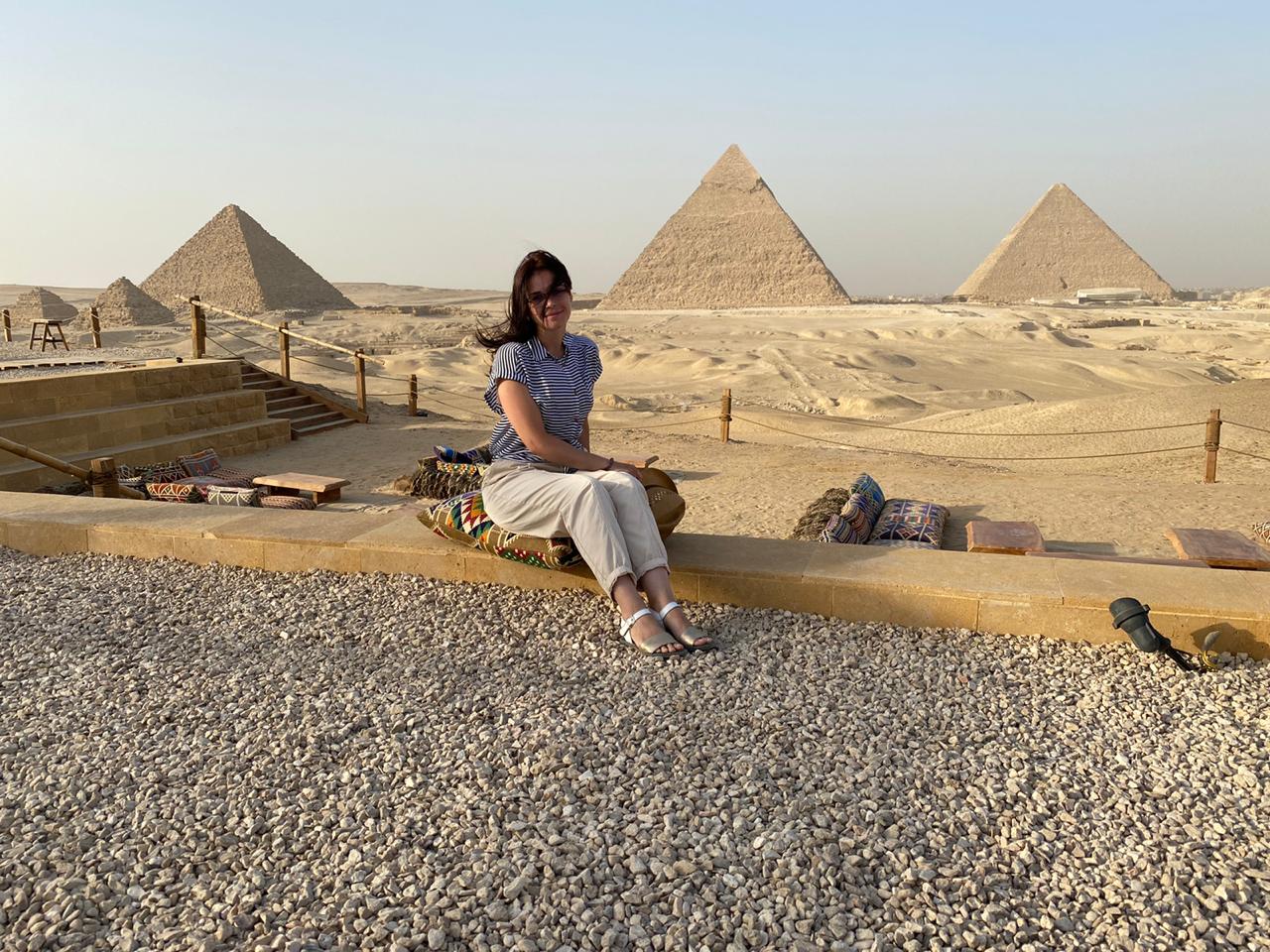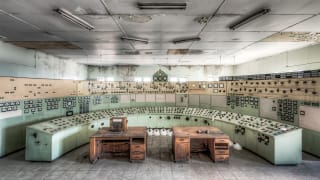When Iman Issa built a glittering golden cube in 2003 off a desert road in Sinai, her hope was to arouse the curiosity of passersby.
In careful detail, the multimedia artist describes the desired reaction of her audience: “The viewer will drive by, see the object, and the object will register as an image. Then perhaps the viewer will get out of the car and begin walking toward it. As they approach it, it will become something different.”
Creating a temporal gap between seeing a mirage of gold and understanding the physicality of the abstract desert object is precisely Issa’s aim in constructing her sculpture, “Golden House.” The structure is designed to initiate a reaction and take the viewer through a stream of open-ended questions. Issa’s intent awareness of the process of perception makes the experience of viewing her work a quiet, slow exploration.
Born in Cairo in 1979, Issa began exhibiting soon after graduating with a bachelor's degree in fine arts from The American University in Cairo. Her earliest works were light and sound installations that explored the contextual associations of common decorative motifs, such as colorful streetlights.
“I was interested in the moment these decorative materials turned into something specific, carrying associations. So I thought I would present new environments that I made up, using these elements, and they would act as new manifestations of something familiar,” says Issa.
She took this element of the bright Cairo tableaux and reinstalled it in the transforming context of an art gallery, asking the viewer to draw meaning from a recontextualized aesthetic motif.
Since then, Issa has moved from light to sculpture, photography, video, and back, through a range of diverse lines of inquiry, but never stopped seeking to better understand “the familiar,” an idea she speaks of as if it were a cluster of fleeting images that she is never able to grasp, but which skips through her mind in various forms.
Issa has had her work exhibited across the world, in Oslo, Berlin, London, Istanbul and Rome, as well as in Cairo. Her video work has been screened, among other places, at the Tate Modern in London and the Bidoun Artists Cinema in Dubai. Throughout her diverse body of work, she follows a desire to draw out elements of her world – be it colored lights, dust running through car headlights on a night highway, or any number of momentary associations – and question how they carry meaning in new contexts.
Issa’s career eventually drew her away from Cairo when she moved to New York to complete an master's in fine arts at Columbia University. Moving across the world may have been helpful for an artist who seeks to understand the connection between personal associations and physical spaces and objects. In her newly adopted city, Issa searched for spaces that were “familiar,” which meant seeking out shadows of Cairo.
“I would be walking and find all of these spaces that looked familiar or reminded me of other places,” says Issa. The familiarity was fleeting and specific: “Sometimes it was temporal. For example, the way the light hit a building against a fountain would become familiar.”
Though she has explored this idea through a succession of photography and video series, her most complete expression came in her recent series “Triptychs,” a collection of six three-part pieces.
In “Triptych #1,” a small, postcard-size photograph of a waterfront park is juxtaposed against a staged image of a xylophone and an Egyptian flag on a sterile white background. A stack of four small pieces of plywood, marked down the middle with a thick red line, sits on a small shelf protruding from the wall. The elements of the triptych are connected in both obvious and obscure ways, and the connections are drawn from the meticulous mental process Issa goes through to find and choose the objects and images.
For each triptych, Issa began with a public space or image of a building, mostly in New York, chosen for its “familiarity,” and drew on the image and her associations with it to construct a still life.
Guided by the images in her mind, Issa sought out specific elements for the staged photographs. Speaking about the still-life in “Triptych #1,” she says, “I saw a typewriter in my mind, and it was a specific model. I went down to the street and searched through the stores here, in New York, and as soon as I found the right one, I knew it right away.”
Issa then removed her own memories from the process, and attempted to complete the triptych from a critical perspective, adding one final physical object, disconnected from her own associations.
The result is a collection of images, objects, thoughts and ideas that do not form a web of straight, didactic lines. Rather, the experience of viewing “Triptychs” is akin to sifting through another person’s memories, drawing out snippets of experience and space. In seeking out the connections, the viewer works through a process of association and discovery similar to that which drew Issa herself into producting the piece.
Now completing a new series entitled, in her typically vague but straightforward fashion, “Materials,” Issa looks to reimagine several well-known monuments in Egypt, presenting proposals for installations and providing them with labels such as “Material for a sculpture commemorating a blind man who became a great writer, opening up an unparalleled world of possibilities for the people of his nation.”
The project is simultaneously perfectly planned and completely intuitive. Issa’s installations draw from her personal associations with important figures from Egyptian history, but she also seeks to produce something that taps into a collective memory.
“As I am working on this project I do not know how much personal associations and real associations are determining these forms. I do not know where these forms are coming from,” she says.
But nonetheless, she trusts her process, and that trust will carry the viewer, too, through the artist's path of discovery.




